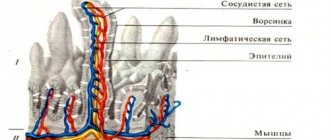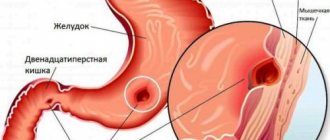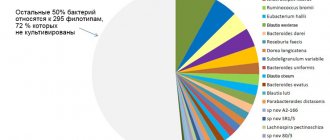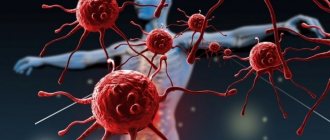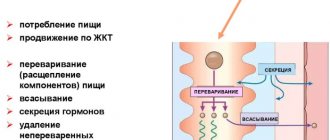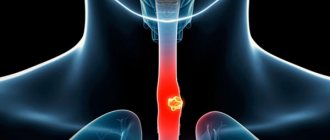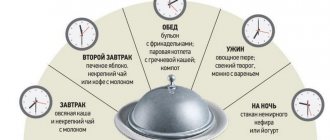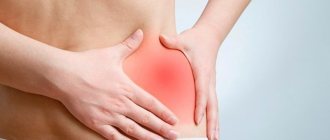The intestines are the most important part of the digestive system. It is located in the abdominal cavity. Various processes related to the digestion of food and absorption of nutrients occur in it. This structure begins with the duodenum and ends with the anus.
The mucous membrane of the intestinal tract produces a number of biologically active substances that are simply necessary for the physiological breakdown of products. Knowledge of the location and structure of this important organ, as well as an understanding of how it works, helps to navigate when providing first aid.
Intestinal anatomy
How many meters is the intestine of an adult? The organ is structurally divided into two main parts - the small and large intestine. The length of the first section can reach four meters. The small intestine is shorter in women than in men. It consists of three main departments:
- duodenum;
- skinny;
- iliac.
This department is responsible for digesting food. It has a small diameter and thin walls. Moreover, this structure covers almost the entire lower space of the abdominal cavity and even partially the pelvis. The thin section is also responsible for moving feces further along the intestinal tract, hormonal secretion and strengthening the immune system. The overall work of the enzymes of the small intestine, gall bladder and pancreas ensures the breakdown of the food bolus into monocomponents.
Attention! The average length of the human intestine is four meters. The thin section is longer than the thick section.
The thick section can reach one and a half meters. Anatomically, it consists of the following parts:
- blind;
- ascending;
- descending;
- transverse;
- straight;
- sigmoid.
After death, the length of the human intestine can reach eight meters. This is due to muscle relaxation. There are no villi on the mucous membrane of the large intestine. There is no active absorption of nutrients here.
This section of the intestine is necessary for the proper formation of feces. Here the absorption of water and the formation of feces from chyme occurs. Along the intestinal wall there is an accumulation of lymphoid tissue. She takes an active part in the processes of the immune system.
The photo shows the structural features of the gastrointestinal tract
Functional significance
The small intestine consists of several sections.
The human small intestine is functionally connected to all organs of the gastrointestinal tract; the digestion of 90% of food substrates ends here, the remaining 10% is absorbed in the large intestine.
The main function of the small intestine is to absorb nutrients and minerals from food. The digestion process consists of two main parts.
Departments
Let's talk about the two main sections of the intestinal tract: the small and large intestine.
Thin
The small intestine is a multifunctional organ, the activity of which determines the coordinated functioning of the entire digestive system. It performs a secretory function, that is, it secretes juice necessary for the breakdown of food. Digestive secretions include mucus, which prevents the intestines from self-digesting.
In addition, the organ performs an absorptive function. Nutrient compounds are absorbed through the mucous membrane. The structure of the mucous layer of the intestinal wall ensures the absorption of exclusively beneficial elements. Endocrine function is ensured by the ability of cells to secrete peptide hormones. They affect the functioning of not only the intestinal tract, but also the entire body.
The muscle structures of the organ are responsible for motor function. The contraction of these muscles ensures digestion, separation of the food bolus and its further pushing. Diseases of the small intestine can have an inflammatory, functional or tumor nature. Some pathologies are congenital, while others are acquired.
Let's look at the most common diseases of the small intestine:
Diseases of the small intestine
- enteritis. Inflammation of the mucous membrane can be caused by exposure to viruses, bacteria, parasites, and fungi. As the disease progresses, the mucous layer swells and turns red. The disease can be acute or chronic;
- allergy. The immune system reacts violently to certain foods that come into contact with the mucous membrane of the small intestine. The pathology provokes the appearance of skin rashes, swelling of the mucous membranes, as well as the appearance of dyspeptic disorders;
- tumors: lipomas, polyps, fibromas;
- peptic ulcer. Most often the disease is localized in the duodenum. The main etiological factor in the occurrence of the disease is Helicobacter pylori infection. An important role is played by genetic predisposition, the presence of bad habits, and emotional stress;
- ileitis. The disease causes inflammation of the final section of the small intestine. The cause of the disease is usually a viral or bacterial infection. Ileitis causes abdominal pain, nausea, as well as a disturbance in the general condition, up to an increase in temperature.
Thick
The thick section has larger dimensions and a wider diameter. Three muscle bands are responsible for peristalsis and the movement of feces. Muscle structures are unevenly distributed. Upon examination, it looks like a cluster of bulges and constrictions.
Attention! Most of the beneficial bacteria live in the large intestine.
The main function of this department is the formation of feces. After entering the thick sections, chyme loses liquid, so its structure changes, it becomes denser and takes on the appearance of feces. A common disease of the large intestine is ulcerative colitis. Chronic inflammation of the mucous membrane causes destructive changes and the formation of ulcers.
The reasons are still not fully understood, but scientists note a connection between UC and genetic factors. The influence of smoking and oral contraceptives on the development of chronic intestinal inflammation was also recorded. Patients develop diarrhea with the release of scarlet blood. There is pain in the abdominal area.
Another common pathology is Crohn's disease, which causes granulomatous inflammation. The disease can affect any part of the gastrointestinal tract and causes intestinal upset. The number of bowel movements per day can reach up to twenty times a day.
According to statistics, in developed countries, older people are at risk of developing diverticulosis. The pathology is characterized by the appearance of protrusions on the intestinal wall. The main role in the formation of the disease is played by poor nutrition, in particular, an addiction to flour and meat dishes, along with a lack of plant foods.
The intestinal tract consists of two main sections: the small intestine and the large intestine.
Symptoms of diseases of the small intestine
Bloating is a symptom of small intestinal disease.
All diseases occurring in the thin part have similar symptoms:
- Painful sensations in the navel area.
- Loose, light-colored, foamy stools with a foul odor.
- Feeling of "boiling" in the intestines.
- Bloating, heaviness in the abdomen.
- Urge to defecate, accompanied by severe pain.
- With severe inflammation, the temperature rises.
- There is rapid fatigue and weakness.
- Weight loss.
- The skin becomes thin and nails become brittle.
- The whites of the eyes turn red, black spots flicker before the eyes. Visual acuity decreases.
- Frequent headaches plague.
- Joints affected by arthritis are painful and swollen.
Diseases occurring in the small intestine:
- Enteritis occurs after bacteria penetrate into the thin part where they should not be in healthy people, causing dysbacteriosis. This, in turn, leads to a decrease in the protective properties of the body and disrupts the production of enzymes in the thin section. The motor function of the intestine slows down. There are acute and chronic forms of the disease;
- carbohydrate intolerance - congenital or acquired lack of enzymes responsible for the breakdown of certain dairy products, sugar (lactose intolerance);
- intestinal vascular disease. Three large arteries pass through this organ. The disease is combined with atherosclerosis of the heart, brain, and limbs;
- allergic reaction to an antigen in the form of a foreign protein;
- tumors. They appear very rarely and are mostly benign;
- Celiac disease is a disease that is inherited. Caused by a lack of enzymes that process protein. It, in turn, poisons the cells of the small intestine, disrupting all current processes.
Physiology
Digestion of food begins in the mouth. Chewing thoroughly helps make this process easier. Next, the food bolus enters the esophagus, stomach and duodenum. In the initial part of the organ, food combines with bile secretions and pancreatic enzymes. Under the influence of these excreta, the food bolus is broken down.
The muscle layer ensures uniform distribution of nutrients along the inner wall. In addition to digestive function, the human intestine is responsible for endocrine and immune processes. Special microflora improves digestion processes and is responsible for the secretion of vitamins.
The intestines are responsible for the flow of hydrochloric acid into the stomach, due to which the primary processing of food occurs. Next, the eaten foods are broken down into individual components. From them the body takes for itself the necessary microelements and water. Then the formation of feces and their further evacuation occurs.
Important! The structure of the human intestine begins with the pylorus of the stomach and ends with the anus.
The job of the intestines is to absorb nutrients from food digested by the stomach. All these processes are supported by bacteria that form microflora. In addition, the intestine is an organ of the immune system. It serves as a barrier to pathogens trying to attack the human body.
What can cause disruptions in the gastrointestinal tract?
A person’s general well-being largely depends on the functioning of his gastrointestinal tract
, various diseases of the stomach and gallbladder can disrupt this work, but the person himself can harm himself.
Frequent “man-made” causes of disturbances in the functioning of the stomach
are:
- smoking and alcohol abuse;
- unbalanced diets;
- food poisoning caused by poor quality food.
It must be remembered that digestion
is a complex multi-step process, so it is important that it is not disrupted at any stage, from the oral cavity to the rectum. The gastrointestinal tract ensures the breakdown of food into the simplest compounds, which the body subsequently uses to build new tissues and to obtain energy; without this, the development and functioning of the body is impossible.
Microflora
The intestinal tract is inhabited by the following bacteria:
- lactobacilli;
- bifidobacteria;
- bacteroides;
- enterococci;
- coli;
- Proteus;
- staphylococci;
- fungi.
The first three names refer to the main group of microorganisms present in the intestines. In addition to beneficial bacteria, the microflora also consists of opportunistic microorganisms. Under the condition of strong immunity, these bacteria do not cause any disturbances in the body, but when the immune forces are weakened, these same microorganisms get out of control, begin to actively multiply and can cause serious abnormalities in the body.
Interesting! The human intestine is inhabited by microorganisms that are seventy times more numerous than the number of inhabitants of the globe.
Bacteria present in the intestines are divided into two main groups: anaerobes (do not require oxygen) and aerobes (live on oxygen). The overwhelming number of microorganisms in the intestinal tract are anaerobes: lactobacilli, bifidobacteria, bacteroides. And, for example, E. coli and enterococci are aerobes.
How long is the large intestine?
As with the small intestine, the total length of the large intestine varies from person to person. Heavier people, young adults, and adult men tend to have longer intestines. For most people, its length is about 150 centimeters.
The length of the cecum is about 6 centimeters. The rectum is about 20 centimeters long, and the anus, the smallest part of the large intestine, is about 2.5 centimeters long.
Some patients with certain medical conditions may require a colon resection or colectomy to remove part or all of the colon.
Violations
Poor functioning of the digestive organ can be associated with several factors. The more factors that affect the intestines at the same time, the more severe the pathology and the more difficult it is to treat. The following reasons play a role in the development of intestinal tract diseases:
- genetic predisposition;
- weakened immunity;
- poor nutrition;
- bad habits;
- passive lifestyle;
- some medicines;
- intestinal infections.
The following symptoms unite intestinal diseases:
- Abdominal pain. The pain syndrome can be intense aching or even sharp paroxysmal. In some cases, it appears in episodes or is associated with food intake. In some diseases, patients can name a clear localization of pain, while in other disorders, the pain outbreak is diffuse. For example, when the small intestine is damaged, discomfort occurs in the umbilical region. Diffuse pain is more characteristic of intestinal bloating due to stretching of the walls by gases.
- Flatulence. This symptom occurs due to excess accumulation of gases. The cause of this condition may be fermentation processes, intestinal atony or decreased motor function.
- Decreased appetite. In fact, patients develop a fear of eating. This is explained by the fact that after a meal the intestines begin to actively contract and secrete digestive juices, which provokes painful attacks.
- Constipation or diarrhea.
Intestinal diseases usually develop against a background of weakened immunity
Heart attack
A heart attack is the death of the intestinal wall. Impaired blood flow can occur due to blockage or spasm. The insidiousness of this pathology lies in the difficulty of diagnosis. Without an angiographic study, it is almost impossible to make a diagnosis.
The pathology manifests itself in the form of sudden cramping pain in the abdomen, nausea, vomiting, and diarrhea. Given the fact that most often the disease is detected in late stages, treatment is mainly surgical. It is advisable to use conservative therapy until signs of peritonitis develop.
Dyskinesia
The pathology is based on deterioration of intestinal tone and motility. Organic damage is not detected during examination, but functional activity is significantly reduced. Dyskinesia causes indigestion. Pathology often develops against the background of neurological disorders. This is why dyskinesia is most often diagnosed in women.
Dyskinesia is divided into hypertonic and hypotonic types. In the first case, persistent spastic contractions of the intestine are observed. They can cause chronic constipation and painful colic. The pathology causes acute cramping pain in the lower abdomen and iliac regions.
The painful outbreak subsides for some time after defecation, and after eating it returns again. Chronic intoxication of the body leads to mental and physical decline in performance. With hypertensive dyskinesia, there may be no stool for several days, and then a large amount of feces is released.
With hypotension, on the contrary, peristalsis is weakened. Patients are bothered by dull painful cramps in the abdomen, a feeling of fullness, and bloating. Feces pass with great difficulty and in small quantities. This causes poisoning of the body.
Endometriosis
A benign neoplasm occurs due to the entry of endometrial cells of the uterus into other organs. Hormonal changes, hereditary predisposition, and weakened immunity play a major role in the formation of the disease. When the external intestinal muscles are affected, nausea and abdominal pain occur during menstruation. If the sigmoid colon is involved in the process, the pain attack is localized in the left lower abdomen.
The following symptoms are typical for endometriosis:
- pain in the depths of the pelvis and in the anus during menstrual periods;
- constipation or diarrhea;
- painful bowel movements;
- the appearance of blood and mucus in the stool;
- increased bowel movements during menstruation.
In women, intestinal endometriosis can cause pain during intercourse, as well as prolonged and heavy menstruation. Drug treatment is aimed at normalizing hormonal levels, since intestinal endometriosis is only a secondary process.
Why it's important to take care of your gut: 4 reasons
Mood
We all know that two main hormones are responsible for a good mood and positive emotions - serotonin and dopamine.
The surprise for many is that they are produced mostly in the intestines. Scientists call this phenomenon the gut-brain axis. It is already quite obvious to specialists that neurotransmitters produced in the intestine send certain signals to the brain through nerve endings - and vice versa: the functioning of the intestine depends on processes in the brain. This is why poor quality nutrition can lead to stress, and when inflammation and infections occur in the intestines, the brain often responds with feelings of anxiety and restlessness2.
“The gut produces powerful antioxidants that travel through the blood to the brain,” says James Giordano, M.D., professor of neurology and biochemistry at Georgetown University Medical Center. “Antioxidants reduce levels of free radicals, which can reduce inflammation that causes depression and anxiety.”
Immunity
About 70% of our immune system is located in the gut3.
- The intestines stimulate the production of T cells, which, among other things, are responsible for recognizing and destroying cells that carry foreign antigens and destroy the immune system. In other words, once more “bad” bacteria are produced in the gut, the body’s immune system can begin to attack its own cells3.
- The intestines work like a guard at a checkpoint, preventing food antigens from entering the body. A disruption in this process, caused by poor diet, excessive alcohol consumption, or antibiotics, is called leaky gut syndrome (or leaky gut syndrome). The corresponding symptoms are: increased fatigue, feeling tired, increased irritability, sleep disturbances, headaches, chronic inflammatory diseases, and so on4.
Leather
If you have ever consulted a specialist regarding skin problems, you probably know that any kind of inflammation is often a consequence, but the cause literally lies deep inside. For example, in the intestines.
With constipation, some waste products that should have been eliminated from the body can enter the bloodstream. The body tries to get rid of them through excretory systems, the most accessible of which is the skin. Moreover, signals of problems can manifest themselves not only in the form of rashes, dryness and enlarged pores, but also much more serious consequences such as eczema5.
As for acne, a significant role is played by the abuse of sugar and refined foods, which are also harmful to the intestines and can cause bloating and flatulence5. However, the body’s reaction to certain products is individual: for some, an extra dessert will not cause skin problems, while others claim that they got rid of acne only after giving up dairy products.
Figure
Even very slender people, faced with problems with their intestines, may notice that they have a disproportionately large belly (relative to their overall figure)6. In this case, many people switch to radical diets, while health issues need to be resolved. It's simple: the better the intestines work, the easier it is for it to digest and remove leftover food.
With constant constipation and flatulence, the feeling of a “bloated” belly can become a habitual condition that goes unnoticed, and this is where external signs can force you to pay attention to your health. Of course, limiting sweets will be useful here too: foods containing refined sugar and simple carbohydrates tend to contribute to intestinal problems6.
Sports will come in handy: an active lifestyle and fitness, by the way, not only help burn extra calories, but also stimulate healthy digestion and get rid of the so-called lazy bowel syndrome7. But it’s still better to approach solving intestinal problems.
Disease Prevention
- Ignoring intestinal problems can lead to the development of various diseases and painful conditions. Gastritis, dysbiosis, allergies, skin problems, excess weight - the risk of developing such troubles increases when you stop taking care of your intestinal health3. If you feel discomfort or notice external signs of possible problems with this organ, be sure to consult a doctor. To exclude severe cases of illness, do not forget to undergo regular examinations and take the necessary tests.
- Another unpleasant consequence of such failures is irritable intestines. This condition can be triggered by stress, an imbalance in the intestinal bacterial environment, poor nutrition and a sedentary lifestyle. You will recognize this condition by a set of symptoms: spasmodic pain, bloating and flatulence, bowel dysfunction: diarrhea or constipation. And you probably noticed that similar symptoms recurred repeatedly over several months8. To eliminate the causes that provoke intestinal irritation, you need to change your lifestyle, start eating right, and use specialized medications8.
- Irritable bowel symptoms need to be managed using a holistic approach. In order to improve intestinal function, modern safe drugs are used, such as Duspatalin® 135 mg9.
